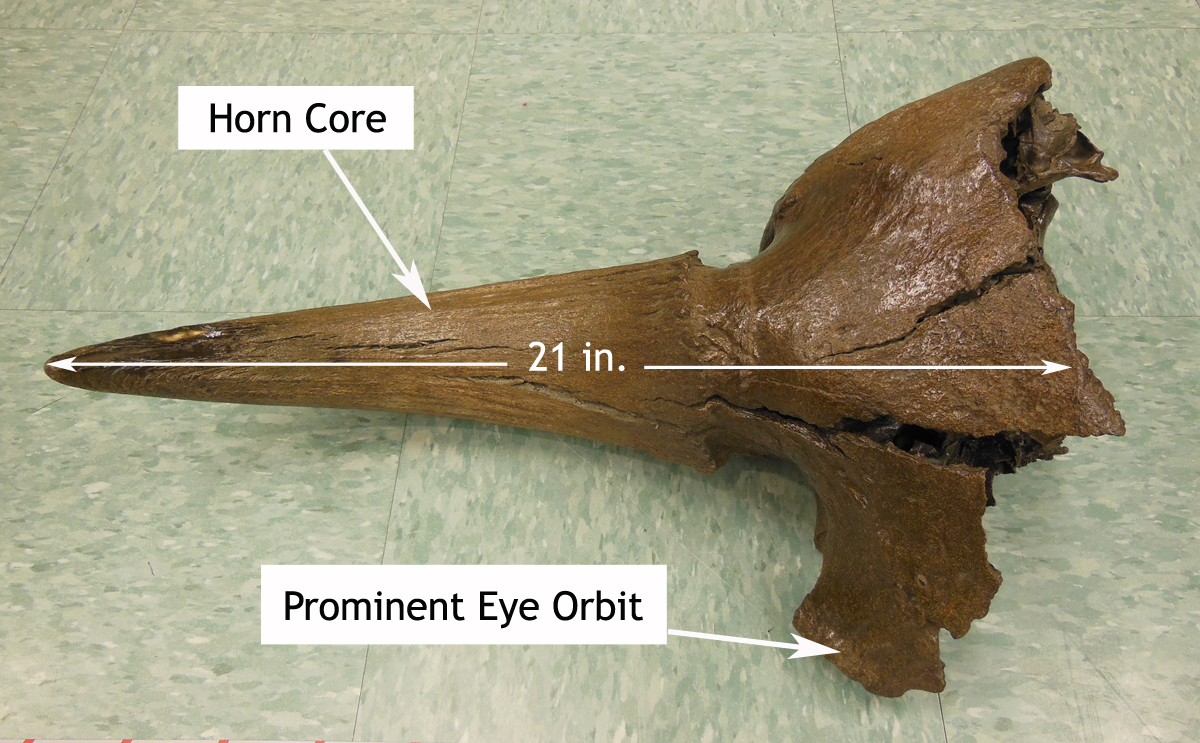"Ice Age Mammal Bones of northwest Alaska" is a series of blog posts written by NPS archeologist Jon Hardes. Each post highlights bones found in the region, often by local residents. If you have found an interesting bone, send him a photo, give him a call, or if the find is in your possession, stop in to share it with him at our office in Kotzebue's Northwest Arctic Heritage Center. But please remember that collecting, disturbing or damaging paleontological resources (fossil bones, shells, plants, etc.) on Federal Lands (such as those managed by the National Park Service, Bureau of Land Management, U.S. Fish & Wildlife Service, etc.) is not permitted.
Jon can be reached via e-mail or phone: 907-442-8342
To see more in this series:
Woolly mammoth tibia
Prehistoric horse maxilla
Short-faced bear mandible

Steppe Bison (Bison priscus) cranium
Photo by J. Hardes
Today’s post profiles a steppe bison cranial (skull) portion discovered near the village of Noatak, Alaska. The specimen is used for educational programs at the National Park Service’s Northwest Arctic Heritage Center in Kotzebue. Though fragmentary and representing less than half of the original complete skull, the specimen measures some 54 centimeters across or approximately 21 inches.
Identifying Features: First and foremost, the sheer size and overall shape of the specimen helps to identify it as being a partial cranium of a bison. There are no other known species from the region with such massive horns. The horn core is a boney projection of the skull that serves as the foundation for the horn. In life, the horn core is covered by keratin (the same substance that makes up our hair and nails). Animals such as Dall sheep (Ovis dalli) and mountain goats (Oreamnos americanus) also possess horn cores. The large, protruding eye orbit (eye socket) provides support and protection for the eye, but also a wide field of vision; an important attribute for an animal that lived in vast, open landscapes and was prey for large Pleistocene predators, including the dire wolf (Canis dirus) and the American lion (Panthera leo atrox). Renowned Alaska paleobiologist R. Dale Guthrie also suggests that “some indication of the length of hair may be seen in how much the orbital bones around the eyes protrude from the skull” (1966).
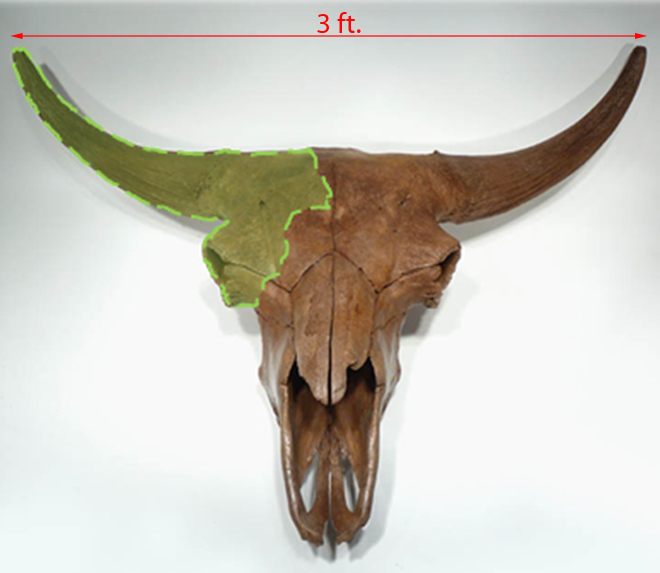
A complete skull highlighting the approximate portion represented by the Noatak specimen. Photo used with permission of the World Museum of Man
A very brief description of the steppe bison:
The steppe bison ranged from Europe, through Asia, reaching North America by about 300,000 years ago. This bison was larger than the modern plains bison (Bison bison) and wood bison (Bison bison athabascae), standing some 6-7 feet tall and weighing as much as 3,000 lbs. They were also highly sexually dimorphic (a difference in size between males and females of the same species), with bulls being much larger (including their horns) than cows.
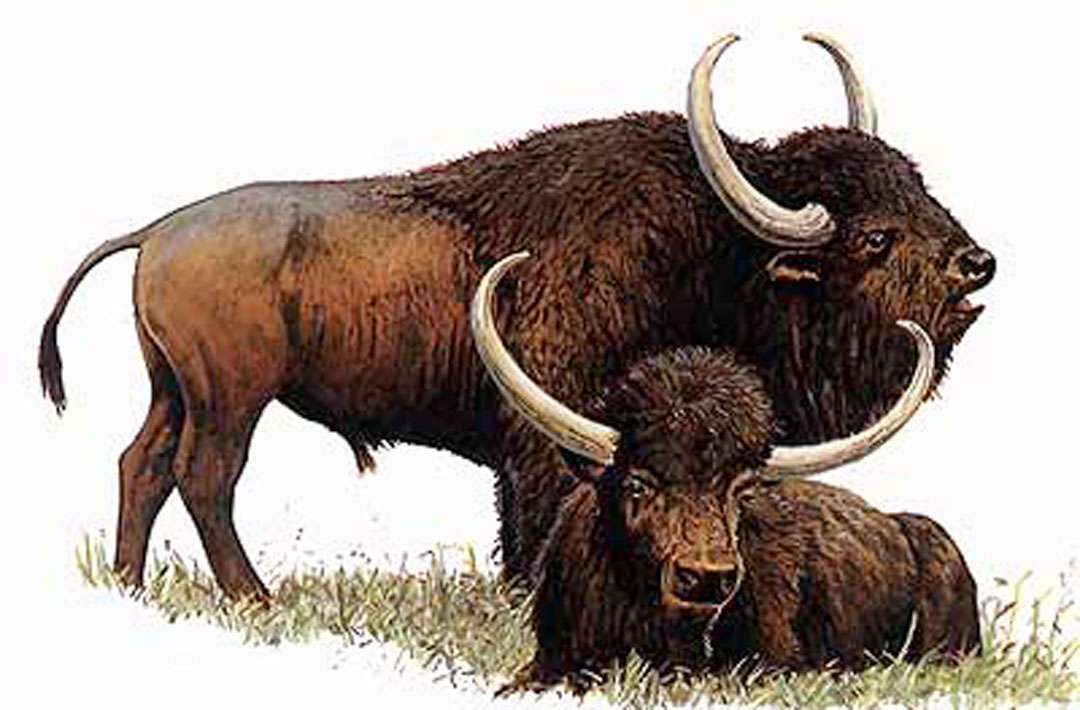
Artistic depiction of steppe bison in life. Courtesy of the University of Maryland
Much of what scientists know about the appearance of the steppe bison comes from the recovery of their partially frozen remains (see links to Blue Babe and Bison Bob below), as well as depictions of the species in prehistoric cave art of Europe. Along with the horse and woolly mammoth, the steppe bison is thought to have been one of the commonest species known from the unglaciated areas of Alaska. They were primarily grazers, though evidence suggests they also browsed on small deciduous trees and shrubs, including willow. The steppe bison is thought to have gone extinct by about 10,000 years ago.
Links to Further Information:
BBC: Ice Age Death Trap (La Brea Tar Pits) - Fossil Bison video (03:26)
Blue Babe - A Steppe Bison at the Museum of the North
Bison Bob - A remarkable Steppe Bison find from the North Slope
World Museum of Man - Prehistoric Animals Collection
Further Reading:
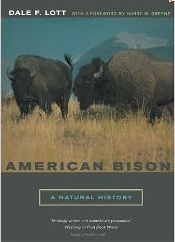
An excellent, detailed natural history of the modern bison, including a section devoted to their fossil ancestors.
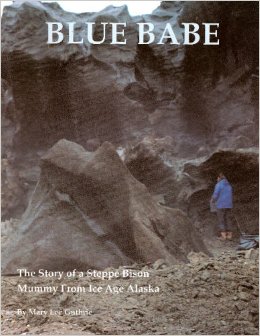
Blue Babe: The Story of a Steppe Bison Mummy from Ice Age Alaska. Mary Guthrie. 1988.
A short, 32-page description of this incredible find; the first of its kind from North America.
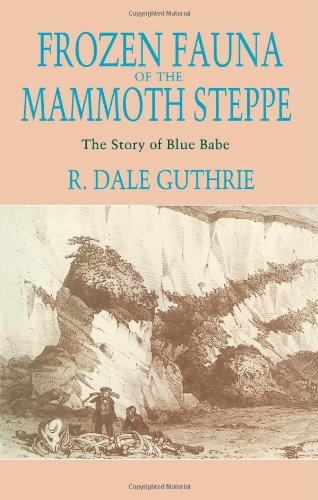
Frozen Fauna of the Mammoth Steppe. The Story of Blue Babe. R. Dale Guthrie. 1990.
A thorough account of the excavation and subsequent analysis of a 36,000 year old steppe bison “mummy”. These finding are then used to illuminate bison evolutionary history and ecology.
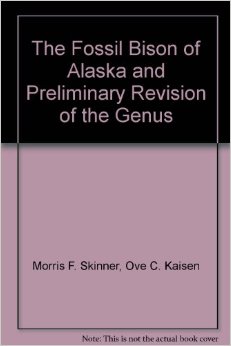
The Fossil Bison of Alaska: A Preliminary Revision of the Genus. Morris Skinner and Ove Kaisen. 1947
An early attempt to describe the various fossil bison remains from Alaska. This volume gets into the nitty-gritty of scientific classification of extinct fauna.
The importance of place:
Paleontological resources provide scientists with a rare glimpse into the prehistoric past. Ancient environments and their variousforms of plant and animal life can be reconstructed by studying these remains and the unique place in the landscapes in which they were discovered. Unfortunately these resources are incredibly limited in numbers and once they are damaged, or removed from their original locations, much of their educational and scientific data is lost.
The Paleontological Resources Preservation Act(enacted in July 2002)
As these resources are non-renewable, the purpose of this Act is “to establish a comprehensive national policy for preserving and managing paleontological resources on Federal Lands.”
“A paleontological resource may NOT be collected from Federal lands without a permit issued under this Act by the Secretary” and resources “collected form Federal lands under the permit will remain the property of the United States.”
Damage to paleontological resources can lead to conviction and a class E felony.
Protect Our Nation’s Cultural and Natural Resources
1. Please do not touch, move, collect or otherwise disturb artifacts, cultural features, or paleontological resources.
2. Record the site location with a GPS unit or by marking it on a topographic map with compass bearings to prominent landmarks.
3. Provide a detailed description of approximate size, numbers, and position of materials.
4. If you have a camera, please take photographs of the site area and surrounding landscape. If possible, include a scale in photos of individual items or specimens.
5. Report information to:
Park Superintendent or Park Archaeologist/Cultural Resources Manager
PO Box 1029, Kotzebue, AK 99752
Phone: (907) 442-3890

